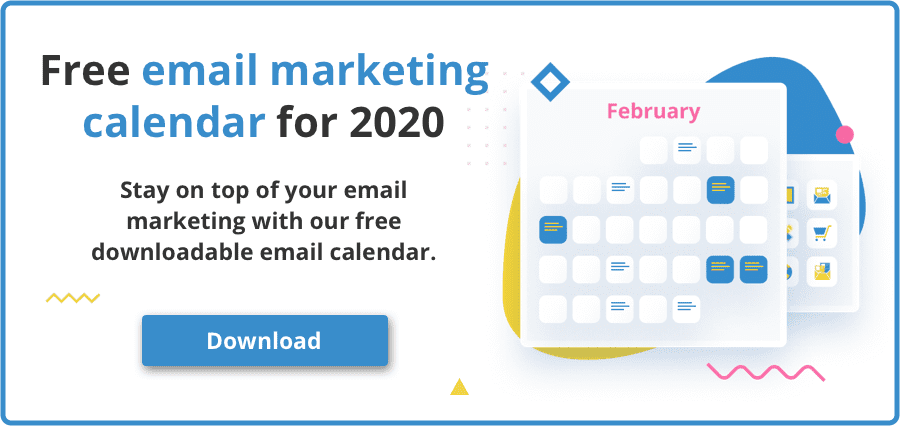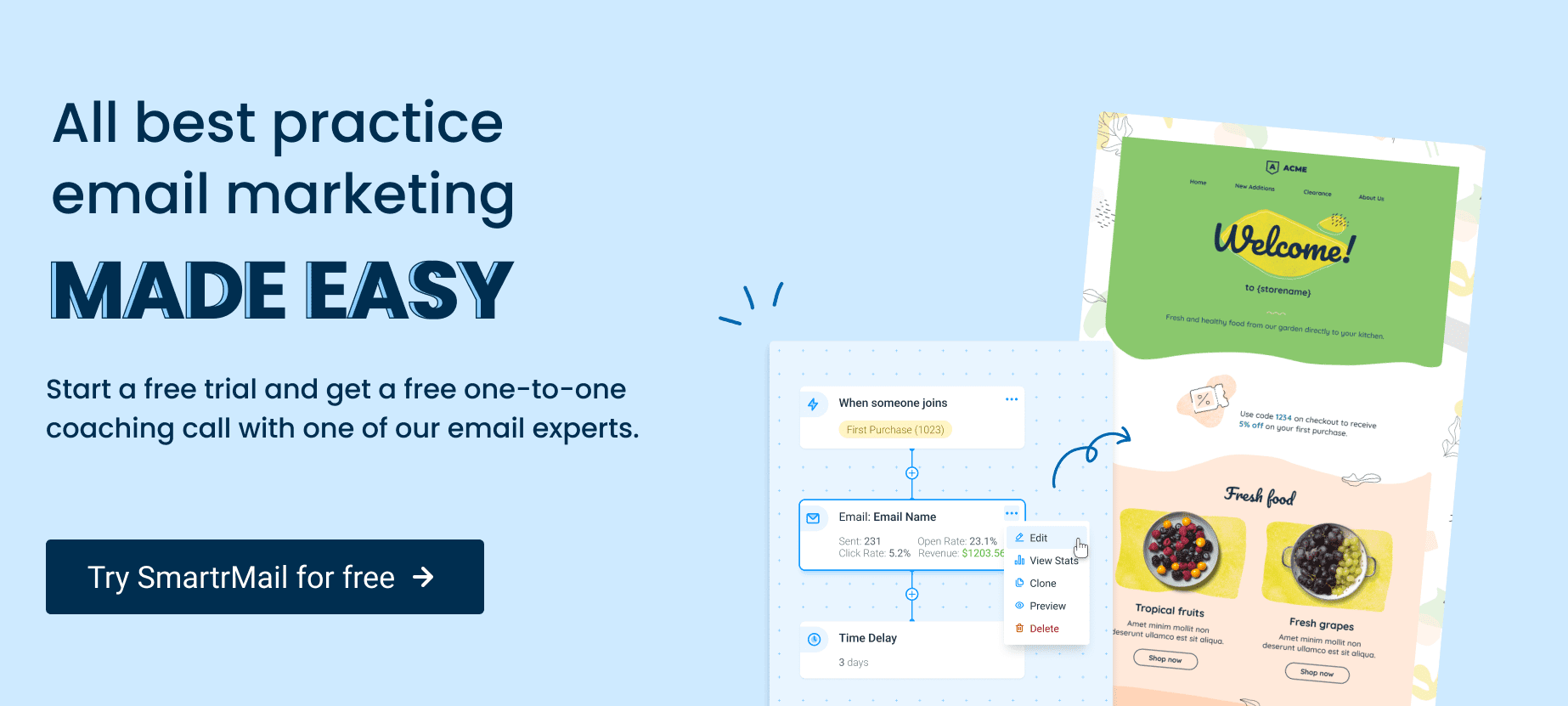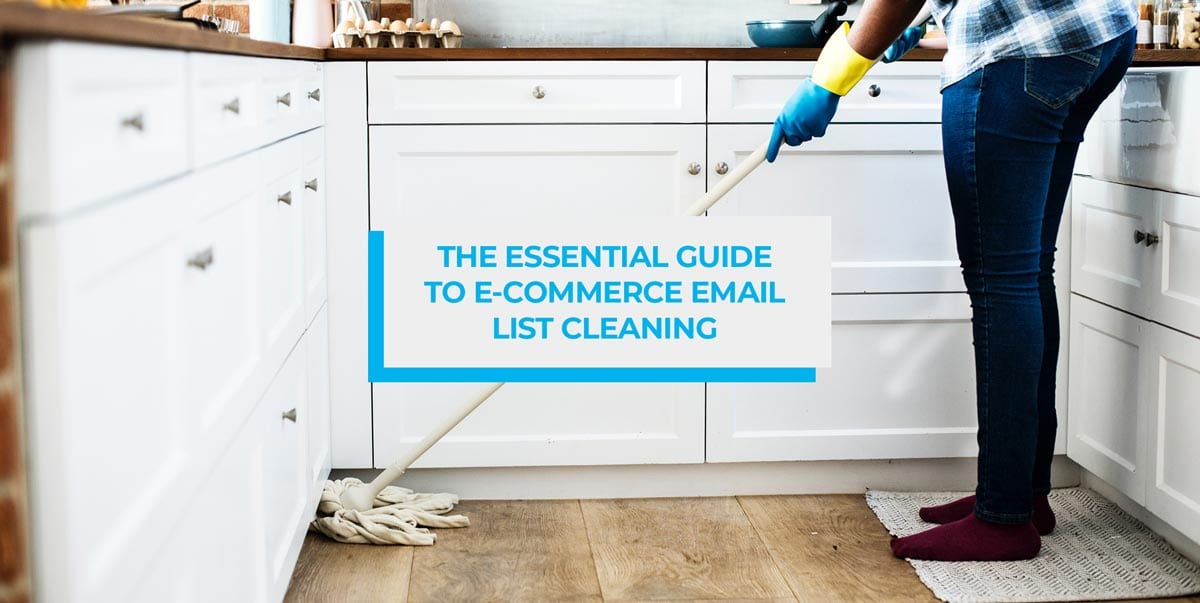
Email list cleaning, also known as list scrubbing or email list hygiene, is the process of removing addresses from your list that should no longer be present. This helps to maintain a lean and clean email list populated only with those you want to be emailing.
Any good email service provider (ESP) will automatically remove unsubscribes from your list, but there’s other reasons you might want to remove addresses that ESPs rarely do for you.
These include:
- Typos in addresses rendering them invalid
- Subscribers no longer engaging with your emails
- People signing up to new inboxes and abandoning their old ones
Overtime these factors result in more and more addresses on your list decaying. In fact, research has shown that the average email lists decays at a rate of 22.5% per year. Such a high percentage should highlight the need for keeping your list clean.
The consequences of poor email list hygiene
There are a number of consequences for you to consider as the number of bad addresses on your list builds. This is firstly reflected in poor open and click through rates (CTR). This can have flow on effects on your deliverability too. This means that by removing these bad addresses from your list, you can potentially increase the odds of your emails landing in the inboxes of those who want to receive them, making it likelier that they’ll convert.
It costs you more financially
In addition to potentially hurting your conversion rate, not regularly cleaning your email list is likely to result in you paying more for your email marketing than you should be. This is because the vast majority of ESPs (email service providers) charge based on the size of your email list. Each additional address on your list is potentially then adding to your costs. Because of this, you’ll want to ensure that everyone on your list is worthwhile being there to begin with.

Spam Traps
Another key reason to keep your email list up to date is because of email spam traps. These are merely email addresses that are used by firms involved in fraud management in an attempt to catch email spammers. These addresses no longer belong to a real person and so the thinking is that nobody should be sending emails to them. When an email is sent to one of these addresses, the sender is flagged as a spammer.
Fraud management firms employ several tactics to generate these addresses, the method of concern for email marketers however is the use of recycled email addresses. These are collected from once active addresses that have not been used in a very long time. The longer you put off cleaning your list, the greater the chance of a once active address being swooped up as a spam trap is. The larger your email list, the more likely this becomes too.

When to clean your email list
Best practice is to make email list cleaning a regular part of your marketing efforts. There are however several red flags indicate your list should be cleaned sooner rather than later. These red flags include:
Declining open and click rates

The first red flag is if you begin noticing your open and/or click through rates falling. Often this is because people are beginning to lose interest in your emails and are ignoring them in their inboxes. To be sure that they are declining, you’ll want to ensure that there’s a consistent and reliable trend occurring. It’s not uncommon for the odd email campaign to miss the mark or for engagement to drop off during certain times of the year depending on your industry.
Increasing bounce rate
Bounces are when an email fails to deliver to a person’s inbox due to a technical error. Reasons can include there being no inbox to send the email to, the subscriber’s inbox being full, and even the subscriber having block your emails. Occasionally bounces will occur as because of misspellings in email addresses.
More people unsubscribing
Having people unsubscribe rather than simply ignoring your emails is generally a bigger red flag. This is because they are actively saying that they do not want to receive any emails from you or your store again. Typically this can indicate that you’re sending emails too frequently.
More spam complaints
The most serious red flag, if your complaint rate is rising, then you might have a problem with people inadvertently joining up to your email list.
How to clean your email list
When it comes to cleaning your email list, there are some general principles and methods to follow and some more specific things to do in more unique situations.
General Cleaning & Dealing with Lowering Open and Click Through Rates
The first step to cleaning your email list is removing people who are no longer engaging with your emails. Exactly what constitutes a disengaged subscriber will vary depending on your store’s nature. For example, if you’re specializing in back-to-school sales, it wouldn’t be unusual for people to only engage with your emails in the lead up to the new school year. However, if most people are engaging with your emails on a weekly basis, those who haven’t opened an email from you in months are likely no longer interested.
Once you have determined a suitable time period for your business, you can then go about identifying your disengaged subscribers. Depending on your ESP (email service provider) you may be able to quickly generate a list of subscribers who haven’t engaged with your emails in your specified time period. SmartrMail allows you to do this quickly and easily, instructions for doing so with SmartrMail are here.
After identifying your disengaged subscribers, you have two options: remove them from your list straight away, or try to win them back. Attempting to re-engage your disengaged subscribers is the preferable option as it’s a lot easier to get people who have previously shown interest in your emails to once again interaction with them than trying to brand new people to subscribe. You can view our earlier blog post here on how to get people to re-engage with your emails. If after attempting to win these people back, they’re still not engaging, then it’s time to delete them from your list.
Sign-up to our newsletter and receive a free eBook with hidden Email Marketing Tips
More Specific Situations
If you’re finding that either your unsubscribe rate or, worse, your compliant rate is increasing, then there’s some extra steps you should take.
People Unsubscribing
For an increasing unsubscribe rate, you might want to first see if whether reducing your send frequency lowers the number of people unsubscribing. This is because one of the most common causes of unsubscribes is people getting sick of the number of emails landing in their inboxes.
If this doesn’t help, then it’s possible that people are signing up without actually being genuinely interested in receiving your emails. This can occur if you have a free offer for people in exchange for signing up to your email list, such as a free report or a one-off coupon. Once they have what they want, they might not see any reason to stick around and therefore unsubscribe. In this case you’ll want to make sure that your emails are worth sticking around.
People Complaining
People complaining (i.e., reporting your emails as spam) generally indicates that they did not want to be on your email list to begin with. Because of this, your first step should be to ensure that you are only adding people to your list who have fully agreed to being on your list. If you find that people are being added to your list without their full consent (e.g., you aren’t buying email lists or signing people up in a deceptive manner) you should immediately end the practice and see if that improves your compliant rate.
If after ensuring that people are not being added without their consent and your compliant rate is still high, you might then want to send a re-opt in email. This basically involves simply sending everyone on your list an email asking whether they still wish to continue to receive your emails and if so, for them to sign up to a new, separate mailing list. Because those who are still interested in staying on your list might miss this email, you should consider sending a few spaced out over a few weeks.
Conclusion
Obviously, you shouldn’t just sit back waiting until red flags start appearing before you start cleaning your email list. Maintaining good email list hygiene is essentially for every email marketing manager. Doing so will not only improve your sending reputation and deliverability, but most importantly it will ensure that your emails are working their best to generate you more sales!
If you’re looking for an email service provider that makes this easily, you can get started today with SmartrMail – a dedicated ecommerce email marketing service where you can quickly and easily create great looking emails filled automatically with products your customers are most likely to want to buy.









